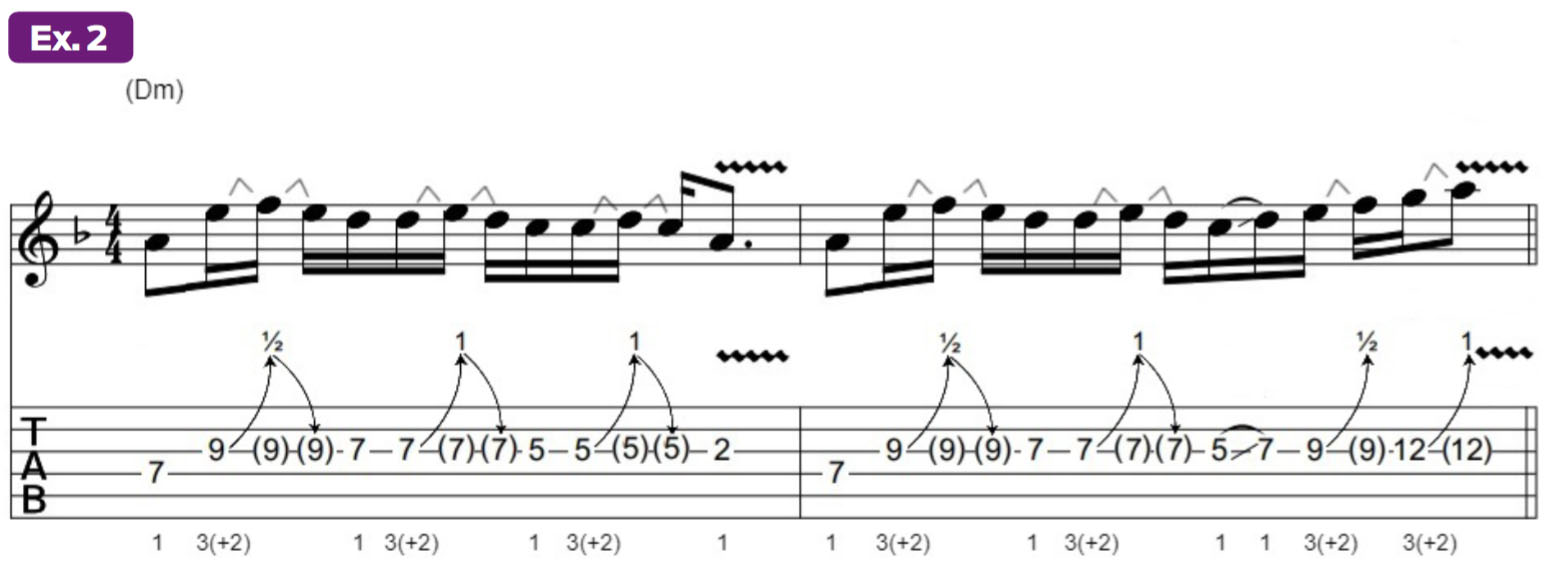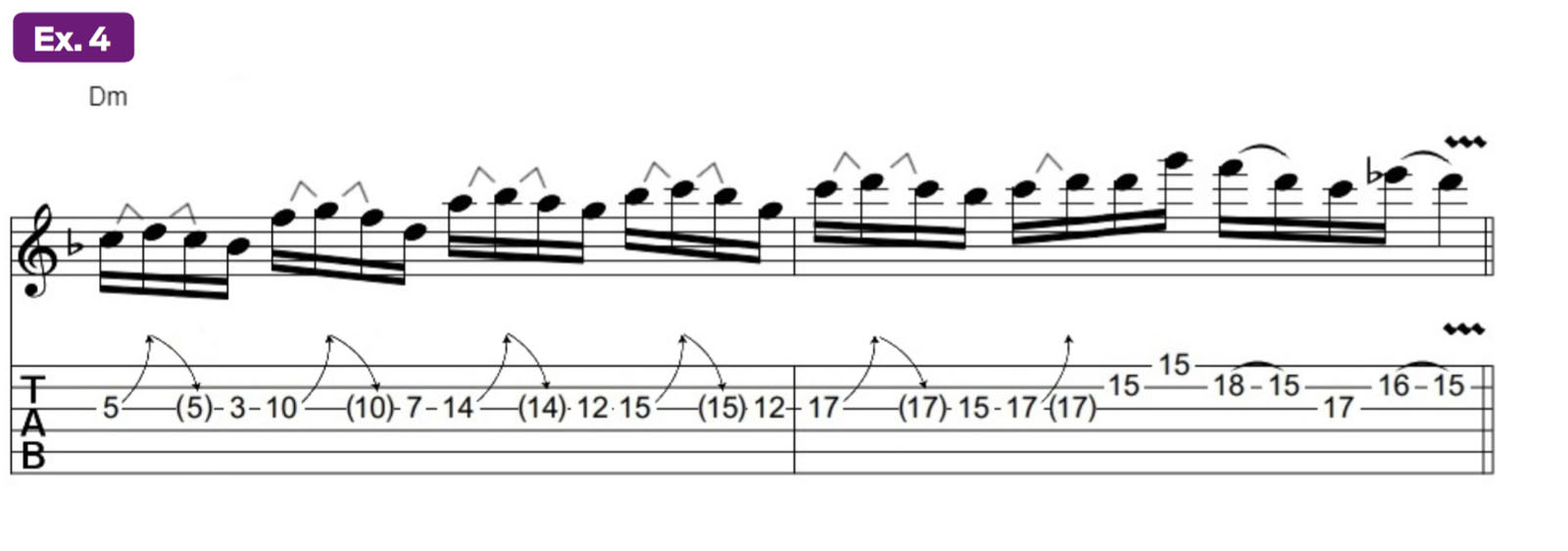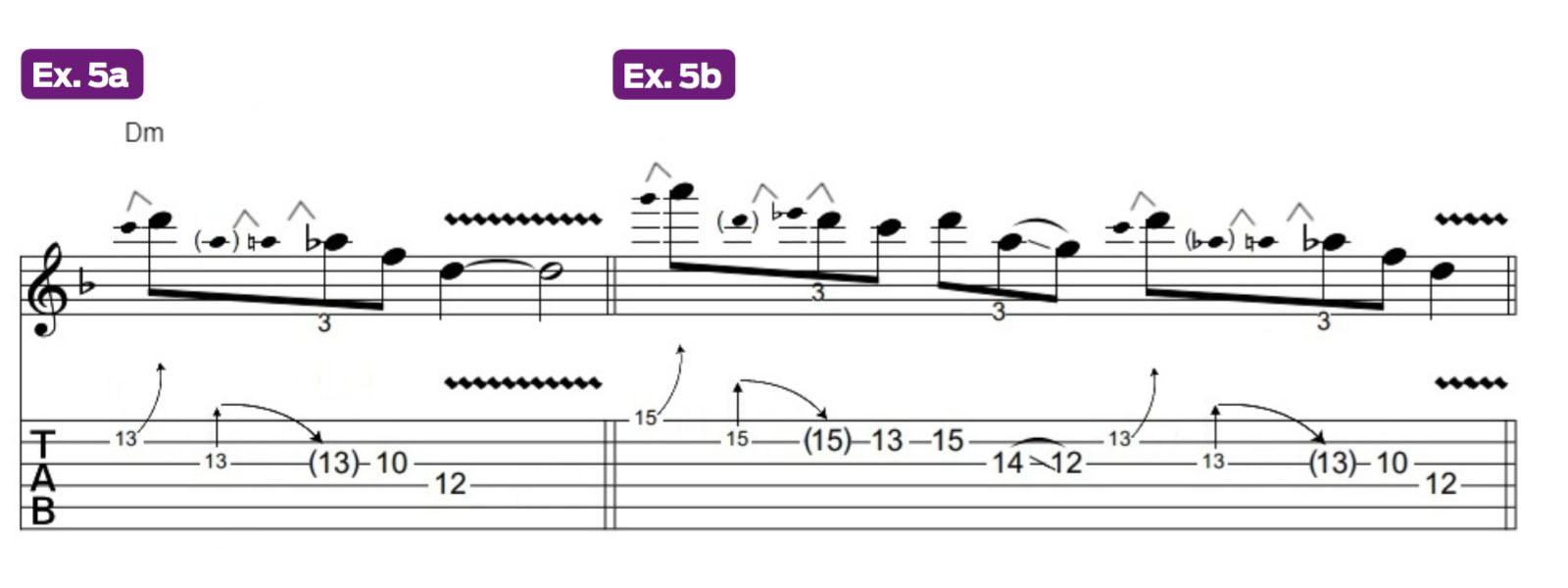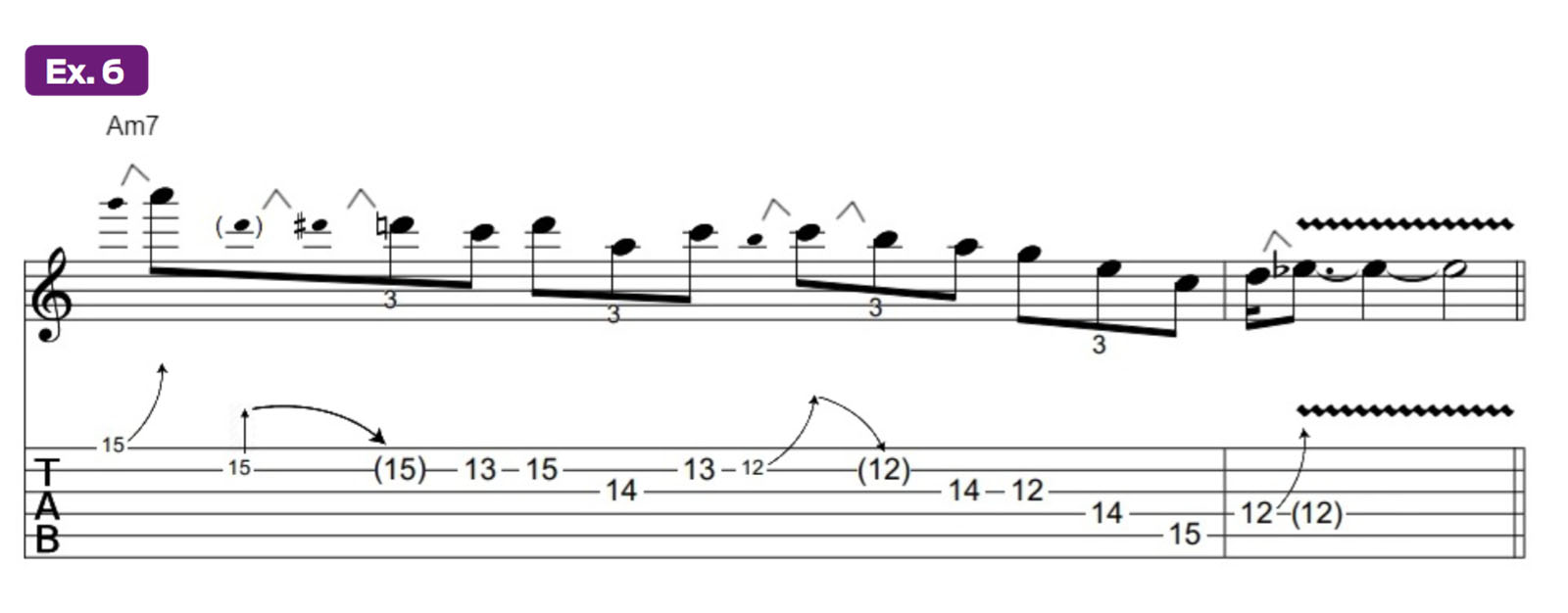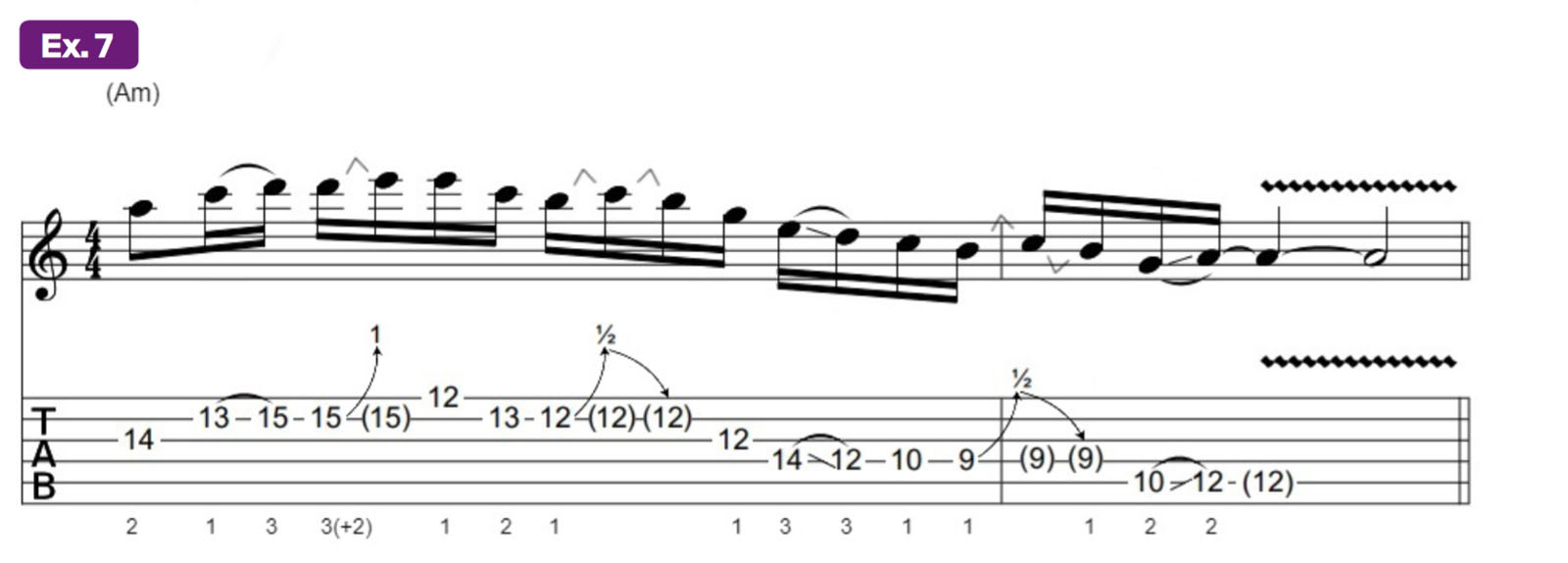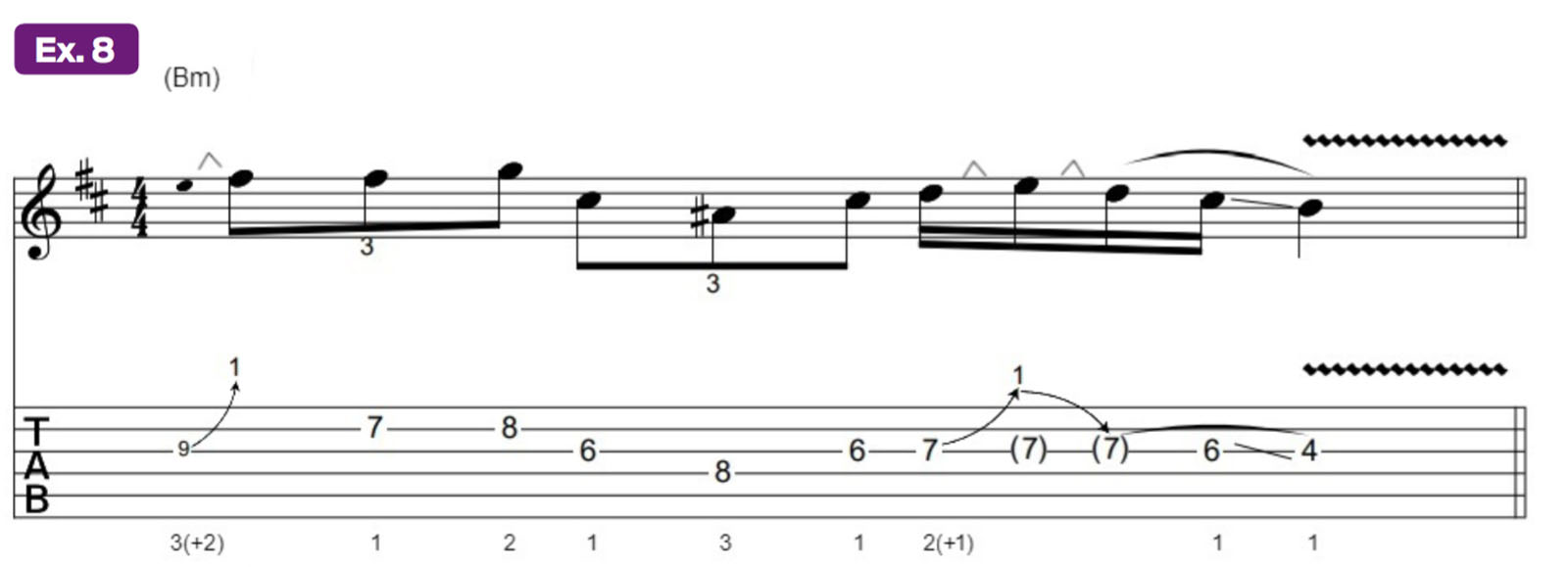How to Bend Strings Like Andy Timmons
Inspired by Jimi Hendrix, Jeff Beck and SRV, Andy Timmons’ expressive, soulful string-bending technique is among the best

Andy Timmons hit the big leagues more than three decades ago when he joined the rock group Danger Danger in the late ’80s.
Since then, the talented and creative guitarist has, among other things, released several inspired solo albums, formed the Andy Timmons Band, assembled a bluesy side-project in the 1990s called Pawn Kings, appeared as a session musician on many albums and recordings, and served as lead guitarist and musical director for Olivia Newton-John’s ambitiously produced touring band.
Timmons’ guitar playing is intensely emotive and demands the listener’s attention whenever he picks up the instrument, as his musical creations create a sense of shock and awe.
While much of what he does is in a melodic rock-based vein, Timmons is also quite versatile and adept at playing gritty blues, swinging jazz and otherworldly fusion with ease and conviction. The latter genre is notably featured in his work on the albums of drum legend Simon Phillips, namely Protocol II (2013) and Protocol III (2015).
Another noteworthy showcase for the guitarist’s creativity and range of diversity can be found on Andy Timmons Band Plays Sgt. Pepper, his brilliant 2011 instrumental tribute to the Beatles’ Sgt. Pepper’s Lonely Hearts Club Band album.
While plenty of worthwhile things can be learned from a guitarist as accomplished as Timmons, one especially laudable area of his playing is his refined string-bending technique, which is the focus of this lesson.
As you’ll discover, Timmons employs a variety of interesting bending approaches that are uniquely expressive, soulful and highly appealing.
All the latest guitar news, interviews, lessons, reviews, deals and more, direct to your inbox!
While many of his bending ideas are inspired by those closely associated with the celebrated soloing styles of legends like Jimi Hendrix, Jeff Beck, Stevie Ray Vaughan and Steve Lukather (to name a few), Timmons places his signature stamp and stylized fingerprint on everything he plays.
Some of the approaches presented herein entail rather demanding bending techniques, which are hallmarks of Timmons’ lead playing style and can be challenging to perform. If string bending isn’t yet one of your strong suits, be patient with it and take your time working through this material.
Before we get into the examples, here’s a brief primer on the three most common types of string bends and how they’re notated.
Half-Step Bends
A half-step bend is performed by either pushing or pulling a string sideways (up or down) to raise the pitch of a note the equivalent of one fret, meaning to the same pitch as the regular, unbent note located one fret higher on the same string, which you can use as a reference tone for your “target” pitch.
A half-step bend is signified by the fraction 1/2 appearing directly above a curved bend arrow in the tablature.
Whole-Step Bends
A whole-step bend, similarly indicated by the number 1 appearing over the arrowhead in the tab, involves bending the string further, to raise the pitch of the fretted note to match that of an unbent note located two frets higher on the same string. (half step = one fret; whole step = two frets.)
One-and-One-Half-Step Bends
A one-and-one-half-step bend is indicated by the fraction 1 1/2 and involves bending the pitch of a note even higher, so that it matches that of an unbent note located exactly three frets higher on the same string. (This interval is also known as a minor 3rd.)
In all the examples presented in this lesson, you’ll notice the inclusion of fret-hand fingerings below the tablature staff. The indication 3(+2) signifies that the 3rd finger (the ring) is supported one fret lower by the 2nd (middle) finger.
This technique, known as reinforced bend fingering, is highly useful and effective and is one that Timmons and other master string benders employ all the time.
The added finger provides more strength with which to push the string away from the palm, or – when bending one of the lower three strings – to pull it downward and in toward the palm, thus ensuring more accurate and sure-fingered control over the target pitch.
Reinforced bend fingering is highly useful and effective
When performing a push bend, which is the standard bending technique to use on the G, B and high E strings, it also helps tremendously to hook your thumb over the top side of the fretboard, like a clamp, for leverage.
These same bend fingering techniques are equally important for performing the all-important bend vibrato technique, for which a string is bent up to a target pitch, held briefly then gently shaken.
This is done by partially releasing the bend (by less than a half step), then re-bending it up to the target pitch and doing so repeatedly in an even, tremolo-like rhythm to create a smooth, vocal-like modulation that dips slightly below the target pitch, as opposed to going above it.
This type of vibrato is considered by many to be the most soulful and human-sounding on the guitar. Like all other types of vibrato, it is indicated in notation by a squiggly horizontal line appearing above and to the right of a note or tab number.
Timmons has obviously spent a great deal of time cultivating and perfecting his bend vibrato technique, and it’s one of the key distinguishing elements of his renowned guitar voice, so it is certainly something to work on emulating and mastering yourself.
As always, use your ears to guide and control your fingers and to tell your brain if you’re really producing the sound you want to hear coming out of the amp.
The first area of Timmons’ string-bending vocabulary we’ll explore is his use of a technique called shift bending, whereby a bend is immediately followed by a quick shift up or down the fretboard to another bend performed on the same string in a different position, using the same fingering.
This type of phrasing can be tricky to perform and get a feel for at first, but once the shifting movements and general flow of the idea become familiar and ingrained into your visual, muscle and auditory memory, you’ll be performing similarly crafted licks with authority and conviction in no time.
Our first pair of examples are both based on the six-note D minor hexatonic scale (D, E, F, G, A, C) and introduce this shift-bending concept with two different versions of the same phrase.
Ex. 1a demonstrates a melodic idea that travels downward after an initial half-step bend on the G string, from E – the 2nd scale degree – up to F – the minor, or “flat,” 3rd (b3) – and relocates the fret hand to a lower position, where you then bend the b7, C, up a whole-step, to the D root note at the end of the phrase.
The intervallic jump produced by the abrupt position shift between beats 2 and 3 really helps drive home the shifting technique and the somewhat quirky sound it produces.
Ex. 1b begins the same way but then has you shifting upward to a higher position to grab the note G - which is the 4th of D minor, located at the 12th fret - and bend it up a whole step to the 5th, A.
Ex. 2 is an extended variation on the previous two-part example. It combines the lower and higher shifting movements into a longer and more ambitious phrase that features a plethora of Timmons-style bends performed on the G string.
As you play through the example, notice how the combination of targeted shift-bending movements creates a developed melodic motif, with the low A note at the 2nd fret at the end of bar 1 “answered” at the end of bar 2 by the same note played on octave higher, bent up to from the 12th-fret G note.
Timmons has a knack for creating intelligently mapped string-bending licks and phrases like these in his music. Once you have a feel for performing these quick-shift movements while bending strings, you’ll find that it opens the door to a world of new possibilities and expressive options in your playing.
You’ll also discover an added benefit of using position shifts: They allow you to stay on a certain string longer and maintain a consistent timbre when ascending or descending melodically.
Next up is a developmental melodic exercise for shifted-bend phrasing that uses notes from the five-tone D minor pentatonic scale (D, F, G, A, C) and involves a series of ascending and descending position shifts and bends, all of which are again performed on the G string.
The first half of the phrase, Ex. 3a, moves upward and finishes with a whole-step bend from C to D, which is then adorned with some decorative bend vibrato.
Ex. 3b has you descending the same fretboard path and grabbing and bending notes a little differently before finishing with a low bend from C to D.
Ex. 4 is based on the seven-note D Phrygian mode (D, Eb, F, G, A, Bb, C) and is inspired by a similar type of darkly flavored, swooping shift-bend phrase that Timmons plays in the song “Deliver Us” from his 2006 solo album, Resolution.
In this lick, notice how we’re cruising along the G string using movements similar to those presented in the previous examples, only now we’re playing, after each bend, a lower note fretted with the index finger (1), then shifting upward as the phrase unfolds.
The alternately descending and ascending movement within the phrase creates an interesting melodic contour and ear-catching sound, and it will probably present a challenge for your fret hand and fingers as you develop this type of expressive phrasing and refine this nimble sleight-of-hand technique.
Our next pair of examples features a familiar-sounding Jimi Hendrix–style bending phrase, followed by a Timmons-approved twist on the same idea.
Ex. 5a isolates a famous “string-grab” bending lick that Hendrix immortalized in such songs as “Red House” (Are You Experienced) and “Machine Gun” (Band of Gypsys).
The move involves a slick hand-off of a B-string bend to one on the G string, which is intentionally caught and pushed upward by the tips of the fretting fingers during the initial whole-step bend, so that it goes along for the ride partially and is pre-bent up a half step before the string is eventually picked.
The second half of this two-part example, Ex. 5b, is informed by several similarly conceived phrases Timmons has played over the years. Notice how it starts with the same kind of hand-off, this time from the high E string to the B, followed on beat 3 by a B-to-G-string hand-off.
This bend-passing movement to an adjacent lower string can be little tricky to perform at first, but with practice you’ll get a feel for the fret-hand touch and “double pawing” involved as you develop thicker calluses (from bending) and train your ring finger to seamlessly roll to the lower string in a single movement.
Ex. 6 is another Timmons-style phrase that employs this same technique, only now we’re in the key of A and using notes from the six-tone A blues scale (A, C, D, Eb, E, G) in the same position.
Notice the haunting half-step bend at the end of the phrase, which effectively targets the sinister-sounding b5, Eb, and is capped off with some decorative bend vibrato.
This bend is best performed by pulling the D string downward, in toward the palm. Timmons likes to twist certain notes within his phrases, and you’ll often hear him conjuring unique sounds like this in his lines.
Ex. 7 demonstrates another facet of Timmons’ signature bending style and reveals some of his crafty half-step bending movements within various scale- and arpeggio-based phrases.
As you play through the line, notice how we start off moving through a typical A minor pentatonic-based blues-rock idea (A minor pentatonic scale: A, C, D, E, G), but as the lick unfolds we target a half-step bend-and-release movement on the B string’s 12th fret – moving from B to C and back – which, with the added 2nd, or 9th, B, creates a darkly expressive A minor hexatonic sound (A minor hexatonic scale: A, B, C, D, E, G).
This half-step wavering between these same two notes reappears near the end of the phrase, this time an octave lower. This kind of mirrored phrasing lends thematic continuity to a line and makes it more conversational to the listener. In terms of fingerings, note that both of these half-step bends are performed with only the index finger (1).
Performed in the key of B minor, Ex. 8 is inspired by a bendy phrase Timmons plays in his celebrated tune “Electric Gypsy,” featured on his 1994 debut solo album, Ear X-Tacy.
The lick is based on the B harmonic minor scale (B, C#, D, E, F#, G, A#) and begins in 7th position, then shifts down a fret on beat 2, then down two more frets at the end via a legato finger slide.
Looking at the fingering, you’ll see that the D-to-E bend on beat three is performed with the middle finger (2) supported by the index (+1).
Timmons is a master of bending smoothly and accurately with any single finger (mostly for half-step bends) or pairs of adjacent fingers (mostly for whole-step bends), and this example demonstrates one way in which he’ll use a less common fingering to craft a smooth-sounding melodic phrase.
Our final example is informed by another lick from “Electric Gypsy,” and this time we’re also flirting with a David Gilmour–style melodic bending passage in the key of D that outlines a D major arpeggio (D, F#, A) in a way that brings to mind the Pink Floyd guitarist’s first solo in “Comfortably Numb.”
Ex. 9 showcases this crafty melodic motif, which moves away from a D major arpeggio-based fingering at the beginning of the phrase and shifts downward on beat 3 of bar 1 to a lower fretboard position to strike a whole-step bend and release between the notes G and A on the G string’s 12th fret before sliding down from the 11th fret to the 9th with the index finger (1).
This type of lyrical melodic phrasing is a hallmark of Timmons’ playing style and also brings to mind the lead work of other great rock guitarists, including Gilmour, Eddie Van Halen, Brian May and Slash.
This lesson merely scratches the surface of what Andy Timmons is about as a player, composer and arranger.
You can dive deeper into his musical genius and learn more by listening to and absorbing his emotive blues-rock playing, hyperactive shred runs and jazz fusion–style phrases, as well as his top-notch rhythm playing and comping chops.
Timmons is a gifted and prolific guitarist whose musical output and imaginative ideas will be an inspiration to anyone who is searching for new moves and innovative musical footsteps to follow.

